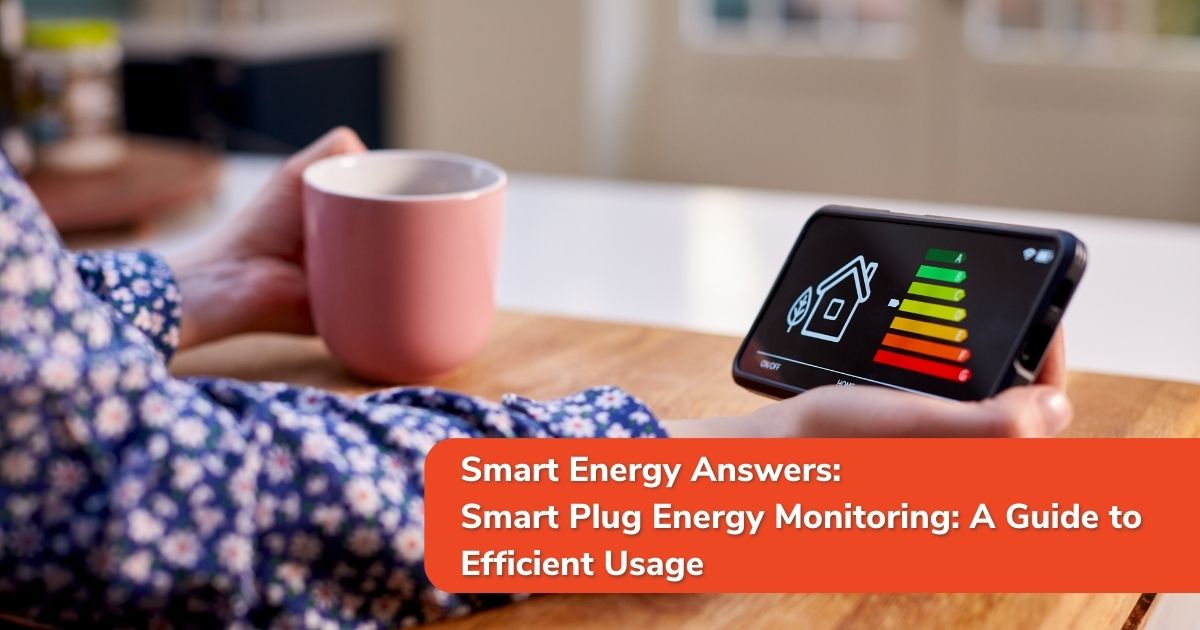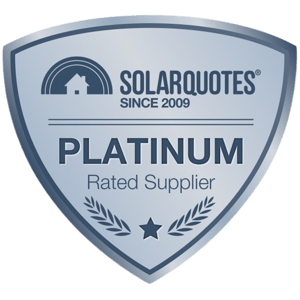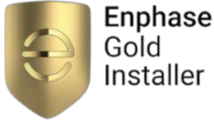Smart Plug Energy Monitoring: A Guide to Efficient Usage

Discover how smart plugs with energy monitoring features can help you track and optimize your energy usage for maximum efficiency.
Significance of energy monitoring in optimising electricity usage
Energy monitoring plays a significant role in optimising electricity usage. By keeping track of your energy consumption, you can identify areas where you can reduce energy waste and make more efficient choices. Understanding how much energy your devices and appliances are using allows you to adjust your usage habits accordingly, resulting in potential cost savings and a more sustainable lifestyle.
Another important aspect of energy monitoring is the ability to identify energy-intensive devices. By monitoring the energy consumption of individual devices, you can pinpoint which ones contribute the most to your overall energy usage. Armed with this knowledge, you can make informed decisions about adjusting your usage habits or even upgrading to more energy-efficient alternatives.
Regular monitoring and adjustment are essential for continuous optimisation. By regularly reviewing your energy consumption data and making necessary adjustments, you can ensure that you are consistently optimising your electricity usage. This ongoing effort will not only help you save on energy costs but also contribute to a greener environment.
Overview of available smart plug technologies and features
Smart plugs with energy monitoring capabilities offer a range of technologies and features to help you monitor and control your energy usage. These smart plugs can be easily connected to your existing electrical outlets and provide real-time insights into the energy consumption of individual devices and appliances.
One of the key features of smart plugs with energy monitoring is the ability to track and analyze energy usage data. This data can be accessed through a mobile app or a web interface, allowing you to view detailed information about the energy consumption of your connected devices. Some smart plugs even provide historical data and trends, giving you a comprehensive overview of your energy usage over time.
In addition to energy monitoring, smart plugs often offer remote control and scheduling capabilities. This means you can turn your devices on or off remotely, even when you're not at home. You can also create schedules to automate the usage of your devices, ensuring they are only active when needed and saving energy in the process.
Furthermore, interoperability and ecosystem compatibility are crucial factors to consider when choosing a smart plug. Ensuring that your smart plug integrates seamlessly with your existing smart home ecosystem allows for a more connected and streamlined experience. It enables you to control and monitor your energy usage alongside other smart devices in your home, providing a holistic approach to energy management.
Real-time insights into energy consumption of individual devices and appliances
Smart plugs with energy monitoring capabilities provide real-time insights into the energy consumption of individual devices and appliances. This means that you can see exactly how much energy each device is using at any given moment.
By having this real-time data at your fingertips, you can make informed decisions about which devices to turn off or unplug when they are not in use. For example, you may discover that leaving your computer on standby mode consumes a significant amount of energy. With the real-time data, you can easily turn it off completely when you're not using it, saving energy and reducing your electricity bills.
In addition, real-time insights into energy consumption allow you to identify any unusual or unexpected spikes in energy usage. This can be an indication of a faulty device or appliance that may be consuming excessive energy. By identifying and addressing such issues promptly, you can prevent energy waste and potentially avoid costly repairs or replacements.
Remote control and scheduling of connected devices for optimized usage
Smart plugs with energy monitoring capabilities offer the convenience of remote control and scheduling for your connected devices. Through a mobile app or a web interface, you can easily turn devices on or off from anywhere, at any time.
Remote control allows you to ensure that devices are not left on unnecessarily when you're away from home. For example, you can turn off lights, appliances, or electronics that may have been accidentally left on while you're at work or on vacation. This helps to reduce energy waste and saves you money on your electricity bill.
Scheduling is another useful feature that enables you to optimize the usage of your devices. You can create schedules to automatically turn devices on or off at specific times of the day or week. This can be particularly beneficial for devices that have a set usage pattern, such as lights or heating systems. By scheduling their usage, you can ensure they are only active when needed, further maximizing energy efficiency.
Importance of interoperability and ecosystem compatibility for a connected home experience
Interoperability and ecosystem compatibility are essential considerations when choosing a smart plug with energy monitoring capabilities. Ensuring that your smart plug integrates seamlessly with your existing smart home ecosystem allows for a more connected and streamlined experience.
When your smart plug is compatible with other smart devices in your home, you can create automation routines and scenarios that optimize energy usage. For example, you can set up a routine that turns off all lights and appliances when you leave the house, or schedule your heating system to adjust based on your daily routine.
Furthermore, interoperability allows for centralized control and monitoring of your energy usage. Instead of managing each device individually, you can access and control all connected devices through a single interface. This simplifies the management of your smart home and enhances the overall user experience.
By choosing a smart plug that is interoperable and compatible with your existing smart home ecosystem, you can unlock the full potential of energy monitoring and optimization.
Installation and setup process for smart plugs with energy monitoring capabilities
Installing and setting up smart plugs with energy monitoring capabilities is a straightforward process. Here's a general guide to help you get started:
1. Choose the right smart plug: Consider factors such as compatibility, features, and budget when selecting a smart plug that suits your needs.
2. Prepare your devices and appliances: Ensure that the devices and appliances you want to connect to the smart plug are compatible and in good working condition.
3. Connect the smart plug: Plug the smart plug into a power outlet, and follow the manufacturer's instructions for connecting it to your home network.
4. Set up the mobile app or web interface: Download the corresponding mobile app or access the web interface provided by the smart plug manufacturer.
5. Add the smart plug to the app or web interface: Follow the app or interface instructions to add the smart plug to your account.
6. Configure energy monitoring settings: Once the smart plug is added, configure the energy monitoring settings according to your preferences. This may include setting up alerts, creating energy consumption reports, or customizing device-specific settings.
7. Connect devices and appliances: Plug your devices and appliances into the smart plug's outlets or connect them to the smart plug via compatible connectors.
8. Test and adjust: Test the smart plug's functionality by turning devices on and off remotely or creating schedules. Adjust settings as needed to optimize energy usage.
By following these steps, you can easily install and set up your smart plug with energy monitoring capabilities, empowering you to track and optimize your energy usage.
Identifying energy-intensive devices and adjusting usage habits accordingly
One of the key benefits of smart plugs with energy monitoring capabilities is the ability to identify energy-intensive devices in your home. By monitoring the energy consumption of individual devices, you can gain insights into which ones contribute the most to your overall energy usage.
Once you have identified energy-intensive devices, you can adjust your usage habits accordingly. For example, if you discover that your air conditioner consumes a significant amount of energy, you can consider using it more sparingly or exploring energy-efficient alternatives. Similarly, if you find that leaving your entertainment system on standby mode consumes unnecessary energy, you can make a conscious effort to turn it off completely when not in use.
By making these adjustments, you can effectively reduce your energy consumption and lower your electricity bills. Additionally, you contribute to a more sustainable environment by minimizing energy waste.
Importance of regular monitoring and adjustment for continuous optimization
Regular monitoring and adjustment are essential for continuously optimizing your energy usage. By regularly reviewing your energy consumption data and making necessary adjustments, you can ensure that you are consistently maximizing energy efficiency.
Monitoring your energy usage allows you to identify any changes or trends that may indicate opportunities for improvement. For example, you may notice a sudden increase in energy consumption, which could be due to a malfunctioning device or a change in usage patterns. By addressing these issues promptly, you can prevent energy waste and maintain optimal energy efficiency.
Additionally, regular monitoring enables you to track the effectiveness of any energy-saving measures you have implemented. If you have made changes to your usage habits or upgraded to more energy-efficient devices, monitoring allows you to assess their impact on your overall energy consumption. This information can guide future adjustments and help you achieve long-term energy savings.
In summary, regular monitoring and adjustment are key to continuously optimizing your energy usage and ensuring maximum efficiency.
Implementing robust security measures to prevent unauthorized access
When utilizing smart plugs with energy monitoring capabilities, it is essential to implement robust security measures to prevent unauthorized access and protect your privacy.
Here are some important security measures to consider:
- Secure your home network: Ensure that your home network is secured with a strong password and encrypted communication protocols. This prevents unauthorized access to your smart plug and other connected devices.
- Keep firmware up to date: Regularly update the firmware of your smart plug to ensure that any security vulnerabilities are addressed. Check for firmware updates from the manufacturer and follow their instructions for installation.
- Enable two-factor authentication: Whenever possible, enable two-factor authentication for your smart plug's mobile app or web interface. This adds an extra layer of security by requiring a verification code in addition to your password.
- Review app permissions: When installing the mobile app for your smart plug, review the permissions it requests. Only grant access to the necessary features and information.
- Disable remote access if not needed: If you do not require remote access to your smart plug, consider disabling this feature. This reduces the potential attack surface and minimizes the risk of unauthorized access.
By implementing these security measures, you can enjoy the benefits of smart plugs with energy monitoring capabilities while ensuring the privacy and security of your home network.
Emphasis on the role of real-time data in driving energy savings and call to action
Real-time data plays a crucial role in driving energy savings and empowering individuals to make informed decisions about their energy usage. By having access to real-time insights into your energy consumption, you can identify opportunities for energy optimization and take immediate action.
For example, if you notice that a particular device is consuming excessive energy, you can turn it off or adjust its usage to save energy. Similarly, if you observe a spike in energy usage during certain hours of the day, you can investigate the cause and make changes to reduce energy waste.
Real-time data also enables you to track the impact of your energy-saving efforts and measure your progress over time. By regularly reviewing the data and adjusting your usage habits, you can achieve significant energy savings and contribute to a more sustainable future.
In conclusion, smart plugs with energy monitoring capabilities provide valuable real-time data that empowers you to make energy-efficient choices. Take advantage of this technology, monitor your energy consumption, and optimize your usage for a greener and more cost-effective lifestyle.
%20(1).png?width=265&height=96&name=www.smartenergyanswers.com.auhs-fshubfsSmart%20Energy%20Answers%20Logo%20(HIRES)%20(1).png)

.png?width=514&height=121&name=Tesla%20Powerwall%203%20(new).png)








.webp?width=300&height=180&name=sigenergy-gold-installer-300x180%20(1).webp)